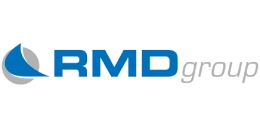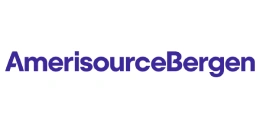A4 Paper Cost Model: Exploring the Paper Economics
_11zon.webp)
What is A4 Paper?
A4 paper, which is one of the most commonly used paper formats around the world, is 210 mm × 297 mm and forms the part of the ISO 216 system. It mainly consists of cellulose fibers obtained from wood pulp, recycled papers, or other fibrous raw materials like bagasse or bamboo.
Key Applications Across Industries:
A4 paper contains crucial characteristics like smoothness, even thickness, high opacity, brightness, tensile strength, and durability, which enable it for printing, copying, and writing. The production process includes pulping raw fibers, bleaching for whiteness, refining for increasing fiber bonding, and sheet formation under regulated drying and calendaring. A4 paper is widely employed in households, offices, schools, and publishing industries because of its standardization, flexibility, and appropriateness with printing machines. Aside from its functionality, A4 paper is also a critical component of formal documentation, scholarly dissemination, and business communication. As the world shifted toward sustainability, greater usage of recycled fibers and green bleaching technologies has positioned A4 paper as more environmentally friendly. In the long run, although digitization might lower some sections of demand, paper production sustainability, biodegradability, and consistent application in education and packaging guarantee a sustained and robust market prospect for A4 paper.
What the Expert Says: Market Overview & Growth Drivers
The global A4 paper market size reached USD 11.76 Billion in 2024. According to IMARC Group, the market is projected to reach USD 17.32 Billion by 2033, at a projected CAGR of 3.7% during 2025-2033. The market for A4 paper is driven by several drivers of demand. The education industry, with its high consumption in schools, colleges, and research centers, is still one of the biggest consumers.
The corporate world, including offices, law firms, and government establishments, continues to drive steady demand owing to widespread documentation and administrative needs. The publishing and printing segment also keeps the demand well-supported, especially in developing economies where physical reading materials remain essential. Besides, the increasing retail and packaging sector is propelling paper usage, with A4 sheets being increasingly used for labeling and branding. Future trends feature the use of high-brightness and environmentally friendly recycled A4 paper, growing innovations in lower-weight yet stronger grades, and greater incorporation of chlorine-free bleach processes. Digitalization presents a major challenge by causing print volumes to fall in developed economies; however, hybrid business models in education and company processes maintain consumption in emerging economies. On a sustainability basis, the focus is growing on the mitigation of carbon footprint via recycled pulp utilization and cleaner effluent management in paper mills. Industry operators are reacting with green technology investment, certifications like FSC (Forest Stewardship Council), and novel fiber recovery systems that will help secure long-term competitiveness of the A4 paper industry.
Case Study on Cost Model of A4 Paper Manufacturing Plant:
Objective
One of our clients reached out to us to conduct a feasibility study for setting up a medium-scale A4 paper manufacturing plant.
IMARC Approach: Comprehensive Financial Feasibility
We developed a comprehensive financial model for the setup and operation of a proposed A4 Paper manufacturing plant in India. This plant is designed to produce 65,000 tons of A4 paper annually.
Manufacturing Process: The production process of A4 paper is a series of carefully controlled steps. It commences with raw material preparation, wherein wood logs, recovered paper, or agricultural waste are mechanically or chemically pulped to break down cellulose fibers. The pulp is washed, screened, and bleached to reach brightness and impurities removal. Refining then occurs, wherein fibers are mechanically processed to enhance bonding as well as strengthen the paper. The treated pulp is diluted with water and applied to an even wire mesh traveling in the paper machine, where primary sheet formation takes place. Suction boxes and press rolls remove the water, and the half-dry sheet is advanced through hot drying cylinders to bring down the moisture to the desired level. Calendaring compresses and smoothes the sheet for thickness and surface finish uniformity. The roll of continuous paper is trimmed into standard A4 sizes with precision cutting tools. Quality checks during this process guarantee measures like brightness, opacity, tensile strength, and GSM (grams per square meter) conform to industry standards. Sheets are stacked, ream-packed (often in packs of 500), shrink-wrapped, and boxed for general retail or bulk distribution. The finished product is used in photocopying, printing, writing, and miscellaneous office and institutional applications.
_11zon.webp)
Get a Tailored Feasibility Report for Your Project Request Sample
Raw Material Required:
The manufacturing of A4 paper requires a consistent supply of fibrous raw materials and chemical additives. Key raw materials include:
- Wood Pulp
- Recycled Fiber
- Sodium Hydroxide
- Hydrogen Peroxide
- Chlorine Dioxide
- Sodium Sulfide
- Titanium Dioxide
- Calcium Carbonate
- Alkyl Ketene Dimer (AKD)
Machineries Required:
- Bale Opening System / Sorting System
- Shredder
- Hydro-pulper
- Refiner
- Vibrating Screens
- Centrifugal Cleaners
- Floatation Cells and Washers
- Pulp Washing System
- Bleaching Tower
- Beater / Refiners
- Mixers / Chests
- Thick Stock / Thin Stock Pumps
- Headbox
- Fourdrinier Or Twin-Wire Former
- Press Rolls
- Suction Presses
- Dryer Cylinders / Yankee Dryer
- Calendaring Stack / Supercalender
- Coating Machine
- Blade Coater
- Curtain Coater
- Reeler
- Slitter
- Cutter
- Automatic Stacking Machine
- Shrink Wrap Machine
- Quality Control System
- Waste Water Treatment System
Techno-Commercial Parameter:
- Capital Investment (CapEx): Setting up an A4 paper plant requires high capital investment in several segments. Land purchase and site preparation constitute the first investment, then mill building and ancillary infrastructure like effluent treatment plants and warehouses. The biggest part is machinery, comprising pulping units, digesters, bleaching plants, refining mills, paper machines, dryers, and cutting/packing lines. Installation, commissioning, and integration of automation systems for precise cutting and quality control also contribute to costs. Key utilities such as captive power generation plants, boilers, water treatment plants, and waste recovery systems are necessary. Furthermore, environmental compliances like wastewater treatment and emission control systems are also essential. IT systems investment in the production monitoring, laboratory space for quality assurance, and safety systems for worker security also constitute part of the CapEx. Together, these factors provide effective plant installation, regulatory compliance, and long-term competitiveness.
- Operating Expenditure (OpEx): Operating cost in an A4 paper mill comes mainly from raw material purchasing, such as wood logs, used paper, or agricultural materials. Energy and water usage are another significant cost factor, considering the energy- and water-hungry nature of pulping and drying. Labor costs, such as experienced operators, engineers, and administrative personnel, are inescapable. Regular upkeep of paper machines, boilers, and cut systems contributes to recurring expenses. Bleaching chemicals, fillers, sizing chemicals, and packaging materials are consumables that also add to OpEx. Sourcing raw materials and delivering finished A4 paper involve high transportation and logistics expenses, particularly for regional and export business. Depreciation, insurance, and taxes also become a part of the operating setup. As environmental regulations continue to grow, wastewater treatment, air emission controls, and compliance certification costs are equally essential. Optimizing OpEx mandates utilizing efficient energy recovery systems, effective water recycling, and ongoing monitoring of fiber usage to reduce waste and maximize profitability.
- Profitability Analysis Year on Year Basis: We assisted our client in developing a detailed cost model, which projects steady growth, with revenue rising throughout the projected period. Moreover, gross profit margins lie between a range of 15-25%, and net profit lie between the range of 5-10% during the income projection years, highlighting strong financial viability and profitability.
Conclusion & IMARC's Impact:
Our financial model for the A4 paper manufacturing plant was meticulously developed to meet the client’s objectives, providing an in-depth analysis of production costs, including raw materials, manufacturing, capital expenditure, and operational expenses. By addressing the specific requirements of producing 65,000 tons of A4 paper annually, we successfully identified key cost drivers and projected profitability, considering market trends, inflation, and potential fluctuations in raw material prices. This comprehensive financial model equipped the client with valuable insights into strategic decision-making, demonstrating our commitment to delivering high-quality, client-focused solutions that ensure the long-term success of large-scale manufacturing ventures.
Latest News and Developments:
- In July 2025, UPM Communication Papers plans to move the manufacture of coated mechanical paper in Finland to its Rauma mill and discontinue paper manufacturing in Kaukas and Lappeenranta. This decision was motivated by structural overcapacity in the graphic paper markets and the need to maintain the long-term competitiveness of its operations.
- In February 2025, Mondi, a world leader in environmentally friendly packaging and paper, has introduced IQ ULTRA and MAESTRO®, two premium-sector experts, to its line of environmentally friendly, high-quality office papers. These items include A4 and A3 papers weighing 80 g/m². Furthermore, to appeal to the entry-level market, Mondi offers a paper in the universal area that is 75 g/m² grammage and in A4 format. Both product lines are manufactured in the Slovak Republic's largest integrated paper and pulp mill, Mondi SCP in Ružomberok.
- In February 2024, Kyocera Document Solutions Inc. announced that the World Packaging Organization*2's WORLDSTAR GLOBAL PACKAGING AWARDS*1 had awarded its colour A4 printer product packaging the "WORLDSTAR 2024" award.
Why Choose IMARC:
IMARC's Financial Model Expertise: Helping Our Clients Explore Industry Economics
IMARC is a global market research company that offers a wide range of services, including market entry and expansion, market entry and opportunity assessment, competitive intelligence and benchmarking, procurement research, pricing and cost research, regulatory approvals and licensing, factory setup, factory auditing, company incorporation, incubation services, recruitment services, and marketing and sales.
Under our factory setup services, we assist our clients in exploring the feasibility of their plants by providing comprehensive financial modeling. Additionally, we offer end-to-end consultation for setting up a plant in India or abroad. Our financial modeling includes an analysis of capital expenditure (CapEx) required to establish the manufacturing facility, covering costs such as land acquisition, building infrastructure, purchasing high-tech production equipment, and installation. Furthermore, the layout and design of the factory significantly influence operational efficiency, energy consumption, and labor productivity, all of which impact long-term operational expenditure (OpEx). So, every parameter is covered in the analysis.
At IMARC, we leverage our comprehensive market research expertise to support companies in every aspect of their business journey, from market entry and expansion to operational efficiency and innovation. By integrating our factory setup services with our deep knowledge of industry dynamics, we empower our clients to not only establish manufacturing facilities but also strategically position themselves in highly competitive markets. Our financial modeling and end-to-end consultation services ensure that clients can explore the feasibility of their plant setups while also gaining insights into competitors' strategies, technological advancements, and regulatory landscapes. This holistic approach enables our clients to make informed decisions, optimize their operations, and align with sustainable practices, ultimately driving long-term success and growth.
Our Clients
Contact Us
Have a question or need assistance?
Please complete the form with your inquiry or reach out to us at
Phone Number
+91-120-433-0800+1-201-971-6302
+44-753-714-6104










